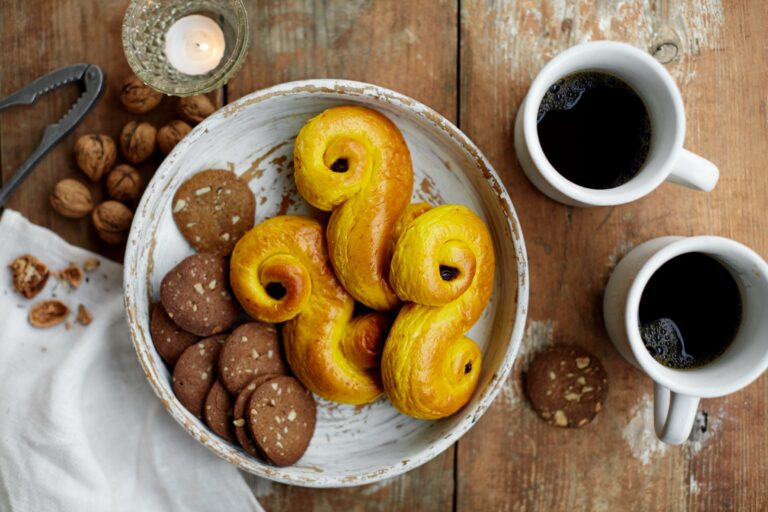Introduction: Swedish Desserts and Sweet Treats
When we think of Swedish cuisine, we often imagine meatballs, pickled herring, and smörgåsbord. But did you know that Sweden also has a rich tradition of sweet treats and desserts? From cinnamon buns to chocolate cakes, Swedish desserts are beloved around the world and offer a glimpse into the country’s culture and history.
In this article, we’ll explore some of the most popular Swedish desserts and sweet treats, their origins, and their significance in Swedish culture and cuisine.
Traditional Swedish Desserts: A Slice of Culture
Swedish cuisine is heavily influenced by the country’s geography, climate, and history. Traditional Swedish desserts often reflect these influences, such as Lingonberry pie and pepparkakor (gingerbread cookies) that use local ingredients and spices.
Many traditional Swedish desserts are also associated with holidays and celebrations. For example, the julbord (Christmas buffet) often includes risgrynsgröt (rice pudding) and julmust (a sweet, non-alcoholic beverage). Midsummer celebrations feature strawberries and cream, while midsommarstång (Midsummer pole) cakes are filled with whipped cream and fresh berries.
Kanelbullar: The Iconic Swedish Cinnamon Bun
Perhaps the most famous of all Swedish desserts, kanelbullar (cinnamon buns) are a beloved treat that can be found in almost every Swedish bakery and café. These sweet, yeasted buns are rolled with cinnamon sugar and often topped with pearl sugar for a crunchy texture.
Kanelbullar are so popular in Sweden that they have their own holiday on October 4th, which is known as Kanelbullens dag (Cinnamon Bun Day). On this day, Swedes celebrate by baking and eating cinnamon buns with friends and family.
Semla: A Creamy and Almond-y Delight
Semla is a pastry that is traditionally eaten on Shrove Tuesday, which marks the beginning of Lent. This sweet treat consists of a cardamom-spiced bun filled with almond paste and whipped cream, and is often dusted with powdered sugar.
While semla used to be a simple and humble pastry, it has become more elaborate over time. Some bakeries now offer variations on the traditional semla, such as chocolate or fruit-flavored fillings.
Kladdkaka: The Swedish Chocolate Cake
Kladdkaka is a dense, gooey chocolate cake that is a staple in Swedish homes and cafés. This cake is made with just a handful of ingredients, including sugar, flour, eggs, and cocoa powder.
Kladdkaka is often served with whipped cream or vanilla ice cream, and is a popular dessert for both casual and formal occasions. Despite its simplicity, kladdkaka is a beloved dessert that showcases the Swedish love for all things chocolate.
Lussekatter: The Saffron-Spiced Buns of Lucia Day
Lussekatter (Lucia buns) are a saffron-spiced sweet bun traditionally eaten on Lucia Day, which is celebrated on December 13th. These buns are shaped like an “S” and decorated with raisins to represent the candles on Lucia’s crown.
Lucia Day is a celebration of light during the darkest time of the year, and lussekatter are a key part of the festivities. These buns are often served for breakfast or as a snack with glögg (mulled wine) or hot chocolate.
Conclusion
Swedish desserts and sweet treats offer a delicious and fascinating glimpse into the country’s culture and history. From cinnamon buns to chocolate cake, these desserts are beloved around the world and showcase the Swedish love for all things sweet and indulgent. Whether you’re a fan of traditional pastries or new and innovative flavors, there is sure to be a Swedish dessert that will satisfy your sweet tooth.

